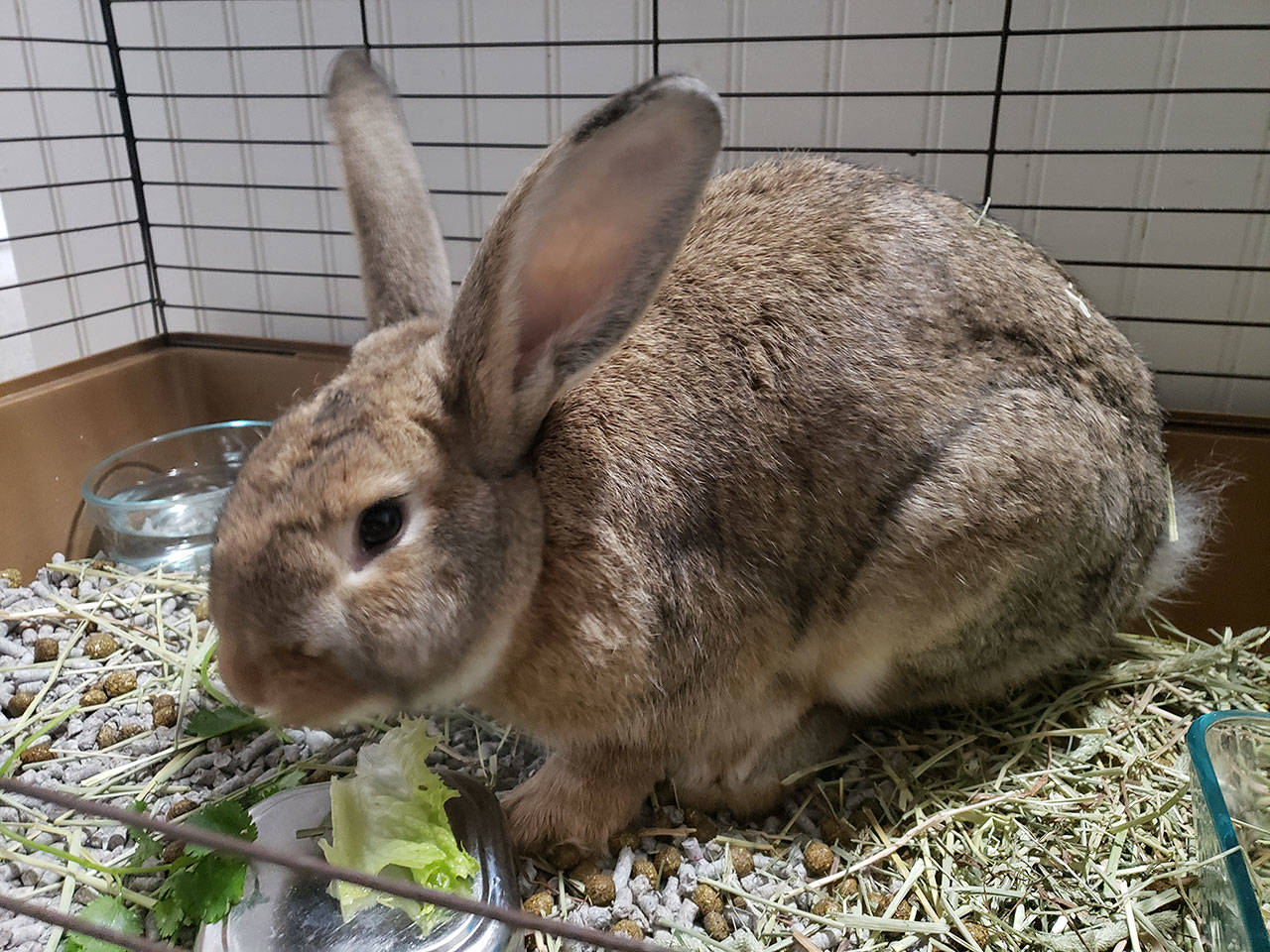If anyone could’ve seen me, I would have made quite a sight.
Luckily, it was a dark October night when I ran around my neighbor’s yard with a blanket, trying to catch the rabbit I spotted while taking my dog out on a walk. The bunny in question was clearly domesticated, and was just as clearly abandoned, so my plan was to nab it and bring it back home, where we had an extra cage.
You can probably imagine my wife’s astonishment when I returned — she sent her husband out with one pet, and he came home with two.
Unfortunately, we couldn’t keep the rabbit, as we already had one of our own (and bonding two rabbits is a long, arduous process). So, we dubbed our furry interloper “Guest” in order to discourage ourselves from adopting him and eventually found a rabbit rescue that was able to take him.
This is not the first time I’ve rescued a lost bun, and it won’t be the last (my friends don’t call me a Disney Princess for my long, luscious golden locks). Unfortunately, I’m not able to keep every rabbit I come across.
What I can do, though, is tell you that if you’re looking for an easy, inexpensive pet that does well with little children and needs minimal space — then stay far, far away from rabbits.
Let’s start with the cost, since that’s seems the best way to scare any parent away from buying their child a fuzzy friend.
Alone, bunnies are fairly cheap — I’m talking $40 at most for standard breeds. But what you may not know is that rabbits are considered “exotic” pets, meaning you need to find a special vet to take care of them, which starts ramping up costs quickly.
For example, the average cost of spaying or neutering your rabbit is around $250, according to the House Rabbit Society.
Of course, you may ask why altering your rabbit is necessary if you’re only getting one. Then I’d probably slap you for not doing your research, then inform you that altering your rabbit will help it live longer (especially female rabbits), be less aggressive (especially male rabbits), limit destructive behavior (so long as we’re talking cost, carpet replacement is not inexpensive), and in general, be a better companion.
On top of the alteration are the twice-yearly checkups with your vet. These are especially important because a bun’s teeth never stop growing, and small problems can become big ones with little to no notice.
Then factor in the cost of daily care — for food, you need fresh greens, pellets, and unlimited hay on the daily, and to keep them clean, you need to change out the litter two to three times a week. These small ticket items can add up to $85 a month, according to My House Rabbit.
In total, the average rabbit owner can expect to spend between $600 – $1,100 a year on their pet, according to Money Management. This is slightly less expensive than a dog, and far more expensive than hamsters and other small mammals, which only cost between $300 – $500 a year.
And that’s all before any emergencies, and rabbits are fragile creatures. For example, buns must — and I mean must— eat every 12 hours, or they will start to go into gastrointestinal stasis (which is a fun way of saying their digestive system freezes up, and you need to get them to a hospital, STAT). These sorts of emergencies can cost you hundreds of dollars.
Play space also needs to be a huge consideration. Rabbits need plenty of room to romp around — the House Rabbit Society suggests a play area of roughly 24 square feet for five hours of play a day. That can be hard to manage, especially in small homes or if you have little kids around.
Finally, remember: this is all just for one rabbit, and due to their social nature, they need constant companionship. If that can’t comes from you, the responsible adult (buns and little kids do not mix well, as again, they’re very fragile), then you seriously need to consider investing in another rabbit to keep your first from becoming bored and lonely (which often manifests as destructive behavior, often to the detriment of your favorite piece of furniture and power cords). So get ready to double their costs, and spend months having separate living spaces for those rabbits as you slowly bond them.
But if it turns out you have the time, space, and extra little bit of money, bunnies are absolutely wonderful pets. They’re quiet, cuddly, and when you get to know them, have big personalities (one of ours is a little daredevil and doesn’t believe she’s a ground creature, and the other is quite fastidious about where his toys are kept). Just keep them away from anything you don’t want chewed up!


